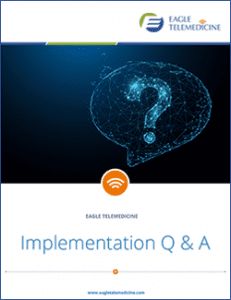Get the Answers About UsingTelehospital Doctors

Telehospital Doctors Provide Surge Protection in the ED
Hospitals are looking for telemedicine applications that help manage spikes in patient volumes, particularly in the Emergency Department (ED). Flu season has traditionally marked a surge in hospital patient load – when ED traffic and admissions spike. These surges put patients at risk when hospitals are understaffed, as is most likely to happen in rural hospitals. These small communities are facing shortages in emergency coverage, a problem expected to worsen as rural doctors retire – with no one to replace them.
Shift changes at night and early morning carry the biggest risk, research shows. Patients admitted at night with stroke symptoms have higher mortality risk. Early morning hours are a big risk for patients with ischemic stroke and myocardial infarction.
The risk to patients was most dramatic during the COVID-19 pandemic, when those admitted during a surge had the highest odds of dying, one study revealed. The data came from 117 US hospitals during spring 2020, when 21% of patients admitted for COVID-19 died. The mortality rate was one-third higher when the COVID-19 burden was greatest.
The mortality risk for ICU patients is also highest during these surges. With resources being diverted to manage the surge, hospital-acquired infections like pneumonia are more likely to develop in intubated and ventilated ICU patients, which increases risk of death.
